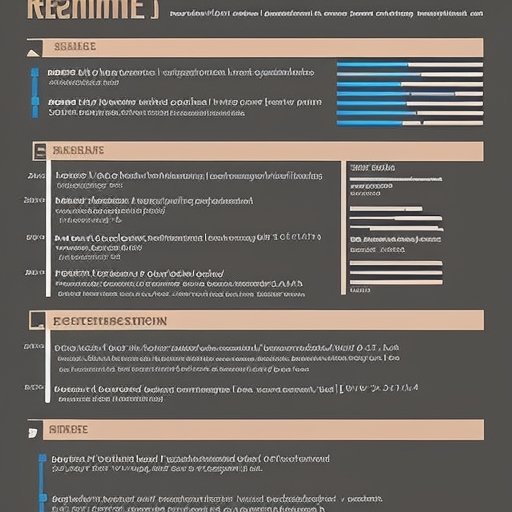Women in Leadership: Mastering Key Leadership Competencies
A good leader possesses certain characteristics and competencies, no matter who they are. However, women in leadership positions may still face obstacles. Despite the fact that there are, at least on the surface, fewer barriers than ever – due to the significant achievements of women themselves – it can still be a challenge for women to be viewed as equally competent in the workplace. Developing and communicating some key leadership competencies can help women, or anyone, succeed in their leadership role.
Gaining Confidence by Demonstrating Competence
For many women, advocating for their own accomplishments can present an obstacle. Traditionally – often as the result of unconscious biases and unfair perceptions of others – women are encouraged to be modest, not to brag. Boasting, it’s been traditionally held, is not seen as feminine. And unfortunately, this stereotypical notion still pervades many corners of corporate culture. It’s important to remember that seeking recognition for work well-done is not bragging or boasting. It’s simply confidence. But a confidence that’s rooted in demonstrating your competence. In other words, being good at something leads to being confident about it. But just being good at something and doing your job well, doesn’t automatically translate into self-confidence.
Show confidence in yourself, back it up with a show of competence. Presenting a combination of high-level competence and a full engagement and interest in what you do, whether the task is large or small, can help create a sustained belief in yourself. Eventually, all leaders, and potential leaders, can make their self-confidence second nature while instilling that same level of confidence in those around them. Without confidence, you can’t be a successful leader, and without having confidence in you, your team can’t be successfully led.
Communicate Like a Leader
Tradition can be a great thing, but it can also be stifling. For example, traditional gender roles have perpetuated the idea that men and women excel in different job roles due to their having distinctly different traits, which can lead, at times, to women’s ideas and insights being marginalized. And while many of these outdated notions are steadily falling by the wayside, vestiges of them persist. In some organizations, women leaders often have to put forth an extra effort to make their voices heard. Still, communication is key to effective leadership, and to communicate like a leader, regardless of gender, it’s important to remember a handful of behaviors that enhance it.
- First, effective communication requires that the listener tune into what the speaker is saying. Good communicators listen more than they talk. Listening is a powerful way to create empathy, give team members a sense of validation, and make you a more accessible leader. Further, the goal of listening is comprehension. And the best way to understand what’s being communicated to you is by being an engaged listener.
- Comprehension is the key. You can’t properly communicate without a full understanding of the other person’s intentions. Don’t assume you understand the ambiguous or unspoken. Ask the appropriate questions, to be certain your understanding is clear. This has the side benefit of letting the other party know that you’re engaged with what they’re saying and considering it carefully.
- Good communication also requires the use of good body language, appearing open and positive. This means remaining physically engaged in the conversation. Keep your shoulders back and avoid crossing your arms, which can make one seem closed off or defensive. Communication is about connecting. By simply tuning in to someone who’s speaking, you can build connections and develop relationships.
- Finally, when it’s time to speak, speak up. Enunciate clearly, project your voice, varying your tone to suit what you have to say and keep listeners engaged. Speaking too softly or hesitantly, especially if in a meeting or across a large conference table, is both frustrating for the listener, who must strain to hear, and makes the speaker seem unsure or timid. Sharing ideas, responding to questions, formulating business solutions are all times when it’s important to get your point across – clearly and distinctly. When you have something to say, make it count. This can be especially important for women leaders. Many women tend to communicate indirectly, using devices such as qualifiers and self-deprecation to soften their words’ impact. This, however, lacks a sense of assertiveness and authority, which can sabotage their effectiveness.
Demonstrate Your Emotional Intelligence
Effective leadership requires a myriad of gender-neutral skills and competencies. Such leaders must be able to communicate, build and wield influence, and motivate their teams. While each of these are distinct skills, they all have one characteristic in common. They all require emotional intelligence. Emotional intelligence, sometimes called EQ, is a skill set all its own. This ability is integral to successful leadership. Without it, leaders risk losing employee engagement and motivation, and a loss of influence, with both the team and within the organization.
But while emotional intelligence isn’t something people are born with or taught in school, it can be learned and developed. To help understand where to begin, there are three key components of EQ to be aware of.
- The first EQ component is self-awareness. This means recognizing your emotional strengths and weaknesses, as well as your moods, motivations, drives, personality type and communication style..
- The second EQ component is the ability to read situations and people accurately. It is the art of observing and retaining, seeing how other people react to different situations.
- The third EQ component is the ability to respond appropriately to a given situation. And it’s based on how you interpret the responses you’re getting from other people, as well as from the environment you’re in..
Creating an Inner Circle and an Outer Network
Building professional networks is part of leadership, and actively creating a network of contacts and support is integral to maintaining a successful career.
To begin, identify people in the industry, both inside and outside of your company, who you admire and who share your values. These should be people who might consider becoming mentors and sponsors. Share your ideas, professional goals and interests with them. Ask them for feedback and support. The connections and knowledge they can provide can give insight into leadership, advice on how to further your career, and contacts that can broaden your network still further. These people can, of course, be of any gender, but it’s recommended that women seek out at least some other women as part of their networking. The Proceedings of the National Academy of Sciences revealed that networking which works best for women are the professional bonds they form with other women.
Aim for genuine connections that are mutually beneficial and seek out the type of shared interests, backgrounds, and industry connections that form bonds.
Making new connections, of course, may entail getting good at small talk, doing research to prepare yourself with relevant questions, and welcoming unfamiliar topics. Plan what to talk about, how you want to introduce yourself, what you have to offer the other person, and what you want to ask them. If you’re attending a network event, do your homework. Create an agenda, identify which people you want to talk to, know what you’re going to talk about, and how to follow up with them after the event.
Finally, don’t sell yourself short in considering what you have to offer others. Networks are reciprocal relationships. They require that you give as much as you receive. Mentor others to pay forward what you've experienced, just as others will do for you. Share what you've learned in your career. You are a valuable resource. Being a leader takes a lot of skill and hard work. For women in leadership positions, there can be the added challenges that arise simply due to gender. The encouraging truth is that you can make yourself the leader you want to be, defining what leading is in your own, unique way. There are certain practices and techniques that can be utilized, skills and intuitions to master, and advice to be considered. But within that framework there is ample opportunity to achieve great success, and to do so of your own agency.
From the blog
View allOther popular blogs
Follow these links to help you prepare for the ACCA exams
Follow these blogs to stay updated on IFRS
Use these formats for day to day operations
- Account closure format
- Insurance claim letter format
- Transfer certification application format
- Resignation acceptance letter format
- School leaving certificate format
- Letter of experience insurance
- Insurance cancellation letter format
- format for Thank you email after an interview
- application for teaching job
- ACCA PER examples
- Leave application for office
- Marketing manager cover letter
- Nursing job cover letter
- Leave letter to class teacher
- leave letter in hindi for fever
- Leave letter for stomach pain
- Leave application in hindi
- Relieving letter format
Link for blogs for various interview questions with answers
- Strategic interview questions
- Accounts payable interview questions
- IFRS interview questions
- CA Articleship interview questions
- AML and KYC interview questions
- Accounts receivable interview questions
- GST interview questions
- ESG Interview questions
- IFRS 17 interview questions
- Concentric Advisors interview questions
- Questions to ask at the end of an interview
- Business Analyst interview questions
- Interview outfits for women
- Why should we hire you question
Popular blogs
Leave application format
Crafting the perfect leave application for any scenario, from personal emergencies to medical leaves, often presents a challenge. To simplify this task, we've assembled an extensive index of leave application formats designed for various circumstances. Our collection is aimed at enhancing the clarity and professionalism of your leave requests. Dive into our index to discover the template that aligns with your specific needs, facilitating a smoother leave application journey.
List of Leave application formats
- Leave application for office
- Leave application for school
- Leave application for sick leave
- Leave application for marriage
- leave application for personal reasons
- Maternity leave application
- Leave application for sister marriage
- Casual leave application
- Leave application for 2 days
- Leave application for urgent work
- Application for sick leave to school
- One day leave application
- Half day leave application
- Leave application for fever
- Privilege leave
- Leave letter to school due to stomach pain
- How to write leave letter











Leave a comment